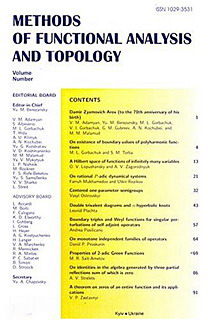Abstract
A conservative Feller evolution on continuous bounded functions is constructed from a weakly continuous, time-inhomogeneous transition function describing a pure jump process on a locally compact Polish space. The transition function is assumed to satisfy a Foster-Lyapunov type condition. The results are applied to interacting particle systems in continuum, in particular to general birth-and-death processes (including jumps). Particular examples such as the BDLP and Dieckmann-Law model are considered in the end.
Key words: Interacting particle systems, Feller evolution, pure jump process, configuration space, Foster-Lyapunov criterion, Kolmogorov equation.
Full Text
Article Information
| Title | Non-autonomous interacting particle systems in continuum |
| Source | Methods Funct. Anal. Topology, Vol. 22 (2016), no. 3, 220-244 |
| MathSciNet |
MR3554650 |
| zbMATH |
06742108 |
| Milestones | Received 24/03/2016; Revised 15/06/2016 |
| Copyright | The Author(s) 2016 (CC BY-SA) |
Authors Information
Martin Friesen
Department of Mathematics, University of Bielefeld, Bielefeld, Germany
Citation Example
Martin Friesen, Non-autonomous interacting particle systems in continuum, Methods Funct. Anal. Topology 22
(2016), no. 3, 220-244.
BibTex
@article {MFAT891,
AUTHOR = {Friesen, Martin},
TITLE = {Non-autonomous interacting particle systems in continuum},
JOURNAL = {Methods Funct. Anal. Topology},
FJOURNAL = {Methods of Functional Analysis and Topology},
VOLUME = {22},
YEAR = {2016},
NUMBER = {3},
PAGES = {220-244},
ISSN = {1029-3531},
MRNUMBER = {MR3554650},
ZBLNUMBER = {06742108},
URL = {https://mfat.imath.kiev.ua/article/?id=891},
}

